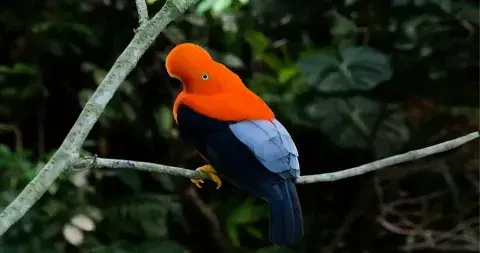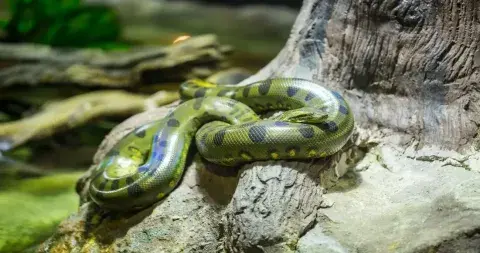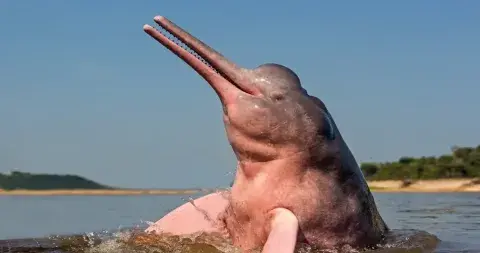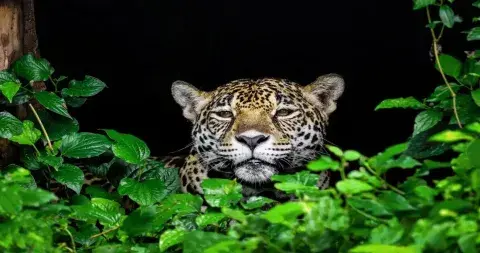Peru is one of the most biodiverse countries on the planet, with some of the world’s rarest animals found within its South American borders. With the Amazon rainforest and The Andes so close, animal enthusiasts and wildlife spotters can take Luxury Peru tours through the jungle and mountains to see unique fauna in its natural habitat. Here are some of the animal species that call Peru’s unique geographical region home and that you will have a realistic chance of spotting on your Peru Luxury tours.
The Andean Condor
The condor is a scavenger and the world’s largest flying bird. The Andean condor is a very important bird in South American culture. It was worshipped as a sacred bird that represented the Hanan Pacha (the heavenly world) in Andean mythology and is well represented in iconography at cultural sites from many different civilizations including the Inca, Chachapoyas, Mochica and Nazca. The Andean condor generally lives in inaccessible rock ledges high in the Andes and is unfortunately, in danger of extinction. Spotting one in Peru is rare, but you will have an excellent chance of seeing them in Chonta in the Apurimac canyon near Cusco, and The Colca Canyon, in Arequipa.
Cock-of-the-Rock
Peru´s national bird is found in tropical and subtropical cloud forests close to rocky areas, which is where they build their nests. This unmistakable bird has a brilliant red-orange plumage, black-and-white wings, and a large fan-like crest that almost completely obscures its bill. This remarkable bird known as a “tunki” in Quechua, is related to other distinctive tropical fruit-eaters.
Anaconda
The anaconda is the largest snake in the world and can reach up to 10 m (33 ft) long and weigh up to 250 kg (550 lb). Anacondas live in trees within the Peruvian rainforest where it slides down from the branches to attack its prey. They are also found in Amazon rivers, tributaries and ponds where these enormous snakes may surprise their unsuspecting prey. Contrary to popular belief, the anaconda is not aggressive, in fact it generally avoids other species, especially human beings. In the Peruvian Amazon, there are several species of anacondas (boa constrictors) and only one of them, the green anaconda, exceeds 4 meters in length, and most measure approximately 2 meters long. The green anaconda avoids any noisy places, preferring the jungle lakes or riverbanks.
Spectacled Bear
The spectacled bear is the only species of bear in South America and one of the most emblematic mammals of the Andes Mountain Range. Spectacled bears are a relatively small bear species that get their name from the light-coloured rings around their eyes. Peru’s spectacled bears are most commonly found in high elevation forests with their main threat being from hunting and the loss of their natural habitat and degradation. This unfortunately means that they are becoming increasingly rare to see. However, around the period of the pandemic, a family of spectacled bears was spotted in Machu Picchu!
Peruvian Hairless Dog
The Hairless Dog is a breed that is native to Peru and is an important icon of Peruvian culture. Its presence dates back to pre-Columbian times, appearing on the ceramics, painting and iconography of cultures such as the Chavín, Moche, Wari, Vicus, and Chimú cultures. With an imposing and proud presence, this dog, also known in Peru as the ‘Calato’ dog, which means “naked” , has been depicted on ancient pottery for different uses and in everyday scenes such as childbirth and breastfeeding, showing that they were largely considered pets by the ancient Peruvians. During Inca times, this dog played an important role in Inca customs, rituals and traditions, as well as being thought to have healing powers. There is a drawing by the Peruvian chronicler Huamán Poma de Ayala in which a ‘Coya’ (the main wife of the Inca) has a Calato dog at her side as her pet.
Humpback Whales
Humpback whales visit the warmer waters of the north of Peru from August through October to give birth. From Mancora on the Northern Coast of Peru, you can take boat tours to go see the whales. If you’re lucky, you can see the males jump out of the water, to attract the female hump backs, a truly impressive sight!
Pink Dolphin
Take a jungle cruise through the Amazon on your Iquitos tours, where you will have the chance to catch glimpses of the rarely sighted Amazonian pink dolphin. These large, fresh water dolphins really are pink, especially the adults, though some turn partially grey in colour. They are the largest river dolphins on the planet and can weigh up to 400 pounds. They are known to be very friendly, playful and often approach humans. While the pink dolphins have not yet been designated an endangered species, they are considered to be “vulnerable,” to extinction.
Sea Turtles
Close to Los Organos in the North of Peru, is the fisherman’s dock turned turtle swimming adventure. Here you’ll find one of a few species of sea turtle native to the Peruvian coast. Five of the seven existing species of marine turtles inhabit the Peruvian coast, and all are endangered. If you do decide to swim with them, please do not touch the turtles. Touching them can remove a thick layer of mucus from their shell that protects them from certain diseases.
Jaguar
The jaguar is the largest cat in the Americas, reaching up to 2.70 m (9 ft) long. Jaguars historically lived from the United States to eastern Argentina. They quickly disappeared from areas impacted by people and are listed as near threatened by conservation authorities. Your best chance to spot one in Peru would be deep in the jungle at an ecolodge and in remote regions far away from any city or town.
Viscacha
Viscachas live in the Andes and can be seen near Colca Canyon, The Ausangate mountain range and Machu Picchu. It is a small rodent with a large bushy tail from the Chinchilla family and are only found in Peru. They are usually grey in color with a bushy, long tail and look similar to a cross between a rabbit, and a squirrel. They are also known for their very soft fur, but are not as soft as their relatives. Like chinchillas, they live in large colonies and prefer harsh, rocky environments at high altitudes to live.
Llama
Llamas are a domesticated camelid, native to Peru. They are synonymous with Peruvian culture and you can find some sort of llama souvenir or stuffed llama all over Peru. Llamas are also native to Chile, Bolivia, and Argentina, and were used both as food and as a pack animal by the Incas, throughout the Andean region.
Alpaca
Alpacas are another domesticated species of South American camelid that look like a smaller, fluffier llama. Alpacas are much smaller and therefore don’t make very good pack animals. Instead, they have a very fine, silky coat that can create soft and warm textiles. The animal is well known for their wool which is very warm and soft, and its products are found for sale all over Cusco.







